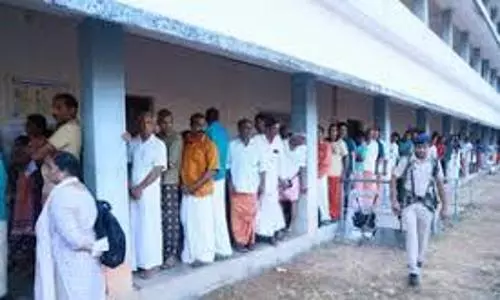
The reality of rural India
text_fieldsThe Socio Economic and Caste Census (SECC) 2011 released recently by the NDA government in New Delhi reveals the grim realities of rural India.
The first paperless census conducted on hand-held electronic devices by the government was jointly released by Finance Minister Arun Jaitley and Rural Development Minister Chaudhary Birendra Singh. It is the first census released after 1932 and contains the details of specific regions, communities, caste and economic groups and measures the progress of the households in India. The census was carried out in 640 districts under the Rural Development Ministry. Jaitley said that the data collected ‘reflects the reality of India’ and would serve as an important input for formulating policies by both the Central and state governments. But speculations are surfacing over the Centre’s attempts to withhold the caste-based data with the reasons to do so still unclear. During the national census survey conducted in 2011, all parliamentary members had demanded a need to include the caste details as a part of the census. Despite the accusations that the erstwhile UPA government was unscientific and inefficient, the census conducted during the period was released by the BJP government. Caste system is an inevitable part of the Indian social set up and reservations which have both economic and political implications are based on caste. So withholding the caste- based census data is dubious. The fear of lower castes demanding reservations, the apprehensions about the privileges enjoyed by the upper castes being terminated or the people becoming aware of the actual population and social set up of the upper castes who has been dominating India so far are all seen as reasons for withholding the census data.
The reports released were shocking and the attempts by the government to exaggerate the data are despicable. According to the census, 90 percent of the rural population earns less than Rs 10, 000 per month. Only over three per cent of all the households have a family member who is a graduate and half of the rural population are daily wage workers with those having salaried jobs coming up to less than 10 per cent. As many as 13.25 per cent of families in villages, reside in one-room houses. Less than four per cent get the agricultural credit of over Rs. 50, 000. While 20 per cent own a vehicle, a mere 11 per cent have a refrigerator. Over half of the population has no land and less than five per cent own agricultural equipment. The report also says that 23.52 percent rural families have no literate adult above 25 years and 6.68 lakh people currently seek employment. The situations in Kerala are also not much different. The percentage of families that depended on agriculture for an income was low as 10.25 per cent. According to the report, 11.38 per cent of the rural population is still illiterate. While those having primary education come up to 7.93 per cent, people with a Degree or Post Graduate Degree amounts to 7.75 per cent. The families which are landless was 72 per cent and 47 per cent of the land has no proper irrigation facilities. As per the census, the percentage of families that live on temporary jobs is 25.34 lakh. While around 4.5 per cent of the population resides in rented houses, 4.08 lakh families find shelter in one-room houses. The Chief Minister Oommen Chandy’s statements that the estimates were not credible are to an extent, acceptable.
The socio, economic and caste census is not based not any specific criteria and therefore the data disclosed are least acceptable. A clear picture would be available only after surveying the urban areas. The reports whether convincing or not, is a grim reminder that fundamental requirements like literacy, employment, shelter and elimination of poverty continue to haunt Kerala as well as India as a whole even after 68 years of independence. The census shows that the majority of the rural India still lives in poverty and misery due several factors like the inadequacy of the land renovation laws, negligence towards agricultural development, the aimlessness in the case of educational schemes and the sloppiness in implementing them along with the stagnation in the employment sector. The state and the Central governments also spend a huge amount on adverts and promotions faking the estimates to cover the costs. The moves can only be seen as deliberate attempts to marginalize the society. One has yet to see how the Modi government moves ahead serving the corporate and establishing their Hindutwa agenda brushing aside the census data. If things continue to move in this direction with the government having the same attitude and approach, the ‘achche din’ which Modi once promised would never arrive.























